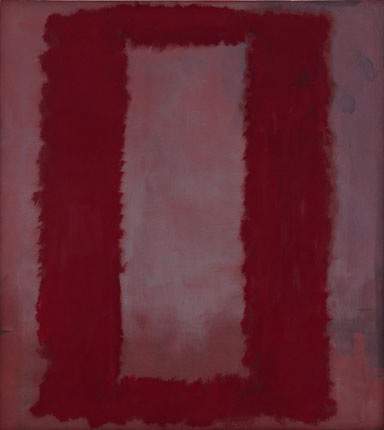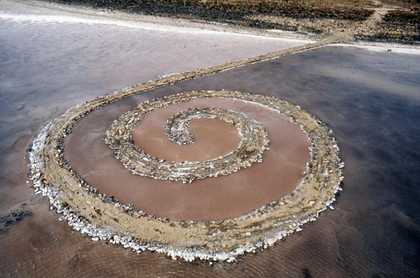On a trip to Sicily some years ago I came one day unexpectedly upon the Doric temple of Segesta, in the countryside not far from Palermo. Segesta, built around 450 BC by the indigenous Elmyans with the assistance of Greek colonists, is refreshingly lacking in tourists. It was a very beautiful spring morning when I was there, yet the place was deserted. I simply turned a bend in the road and there it was, standing above a blossoming meadow in its own silence, seeming, as all Greek temples do, to be tilted at a slight angle to the earth and rapt in contemplation of the sky. I thought at once of Martin Heidegger’s essay The Origin of the Work of Art, in which the philosopher meditates on the way in which the temple not only “encloses the figure of the god”, but is an agent of physis, by which the Greeks meant, according to Heidegger, the “emerging and rising in itself” of all things. “The temple’s firm towering makes visible the invisible space of air.”
“By means of the temple, the god is present in the temple. This presence of the god is in itself the extension and delimitation of the precinct as a holy precinct.The temple and its precinct, however, do not fade away into the indefinite. It is the temple-work that first fits together and at the same time gathers around itself the unity of those paths and relations in which birth and death, disaster and blessing, victory and disgrace, endurance and decline acquire the shape of destiny for human being.”
In 1959, on holiday in Italy, Mark Rothko went with his wife Mell and their eight-year-old daughter Kate for a day’s visit to the Graeco-Roman city of Paestum on the Amalfi coast south of Naples. Paestum boasts three Doric temples generally agreed to be among the best preserved of their kind in the world. The Rothkos were travelling with another family, that of John Hurt Fischer, an editor at Harper’s Magazine whom the painter had met on the sea journey from New York. Rothko had already visited Pompeii and had felt a “deep affinity” between his own painting and the murals in the House of Mysteries there, in which he recognised “the same feeling, the same broad expanses of sombre colour” – and anyone who has seen the House of Mysteries will certainly agree with this judgment, for the similarities with the work he was doing then are uncanny, given that Rothko had painted a number of murals that were eventually to be housed in Tate’s Rothko Room, before he visited Pompeii. Now, at Paestum, he was similarly struck by the modelling of the temples, at once groundedly monumental and celestially lightsome, and wholly mysterious.
On the journey down from Naples the party had fallen in with a couple of Italian youths who offered to act as guides. At Paestum, where the odd-assorted little band picnicked at noon in the Temple of Hera, the young men expressed their curiosity as to the identity and occupations of the Americans. Fischer’s daughter, who was acting as interpreter, turned to Rothko and said: “I have told them that you are an artist, and they ask whether you came here to paint the temples,” to which Rothko replied: “Tell them that I have been painting Greek temples all my life without knowing it.”
The set of colossal canvases housed in Tate Modern’s Rothko Room originated, as every art-aware schoolboy knows, in a commission for the Four Seasons restaurant in the Seagram Building on New York’s Park Avenue. The commission, one of the more remarkable instances of incongruity in the history of art patronage, was for 600 square feet of mural-sized paintings to decorate the walls of the restaurant – “a place,” according to Rothko, “where the richest bastards in New York will come to feed and show off” – although it is not clear if Rothko realised from the outset that his paintings were intended as a backdrop for fine dining. The architect Philip Johnson, who assisted Mies van der Rohe in the design of the building and who was chief commissioner of the Rothko murals, always insisted that the painter knew that they were to be hung in the restaurant.
Great art can be fitted into the oddest places – on a chapel ceiling, for instance, or in a millionaire’s bathroom – but it does seem remarkably brave on Johnson’s part to call on Rothko, one of the most uncompromising of the Abstract Expressionists (a label Rothko vigorously rejected), to soothe the savage breasts of New York’s richest bastards and their mates.
Rothko himself was straightforward, at least in private, about his motives in taking on the Seagram commission. He told John Fischer: “I accepted this assignment as a challenge, with strictly malicious intentions. I hope to paint something that will ruin the appetite of every son of a bitch who ever eats in that room. If the restaurant would refuse to put up my murals, that would be the ultimate compliment. But they won’t. People can stand anything these days.”
Back in New York, Rothko and his wife went to dinner at the Four Seasons, and in the spring of the following year he returned Seagram’s $35,000 fee and withdrew from the commission. One supposes that his experience that night of the restaurant and its rich and powerful diners turned his artistic stomach. Eventually, he decided instead to donate the paintings to Tate. This transaction was also to prove fraught, for Rothko, despite, or, as is more likely, because of the great critical and commercial success that had come to him in the 1950s, tended to detect slights and veiled insults at every turn. After a visit to London in 1966 to discuss “the gift of some of my pictures to the Tate”, he wrote in icy fury to Norman Reid, the Tate director: “Your complete personal neglect of my presence in London, and your failure to provide adequate opportunities for these discussions, poses for me the following question: Was this simply a typical demonstration of traditional English hospitality, or was it your way of indicating to me that you were no longer interested in these negotiations?” Reid himself said that he had been waiting for Rothko to approach him, worrying that otherwise he might put off the notoriously prickly artist by seeming too eager.
In the end, as we know, artistic feathers were smoothed and the Rothko Room opened at Tate in 1970. Rothko knew exactly in what way he wanted the pictures hung and lit. In a list of “suggestions” to the Whitechapel Gallery for a 1961 show of his work, he had stipulated how the walls should be coloured – “off-white with umber and warmed by a little red” – and said the pictures should be hung “as close to the floor as possible, ideally no more than six inches above it” in a room with ordinary daylight, since it was in daylight that they were painted. As we can see in the Rothko Room, the Tate Gallery and now Tate Modern followed these instructions to the last detail.
The room is one of the strangest, most compelling and entirely alarming experiences to be had in any gallery anywhere. What strikes one on first entering is the nature of the silence, suspended in this shadowed vault like the silence of death itself – not a death after illness or old age, but at the end of some terrible act of sacrifice and atonement. In the dimness the paintings appear at first fuzzy, and move inside themselves in eerie stealth: dark pillars shimmer, apertures seem to slide open, shadowed doorways gape, giving on to depthless interiors. Gradually, as the eye adjusts to the space’s greyish lighting - itself a kind of masterwork – the colours seep up through the canvas like new blood through a bandage in which old blood has already dried. The violence of these images is hardly tolerable – as Rilke has it: “Beauty’s nothing / but beginning of Terror we’re still just able to bear.” Here we are in the presence not of religion, but of something at once primordial and all too contemporary. On a notecard from the 1950s, Rothko had written, in his usual clotted style that yet makes his meaning entirely clear:
When I say that my paintings are Western, what I mean is that they seek the concretization of no state that is without the limits of western reason, no esoteric, extra-sensory or divine attributes to be achieved by prayer and terror. Those who can claim that these [limits] are exceeded are exhibiting self-imposed limitations as to the tensile limits of the imagination within those limits. In other words, that there is no yearning in these paintings for Paradise, or divination.On the contrary they are deeply involved in the possibility of ordinary humanity.
In a way, the murals would have suited the Four Seasons, one of those modern-day temples and Houses of Mysteries where the sons of man – and sons of bitches – feed daily upon the blood sacrifice of their own ferocious, worldly triumphs.


